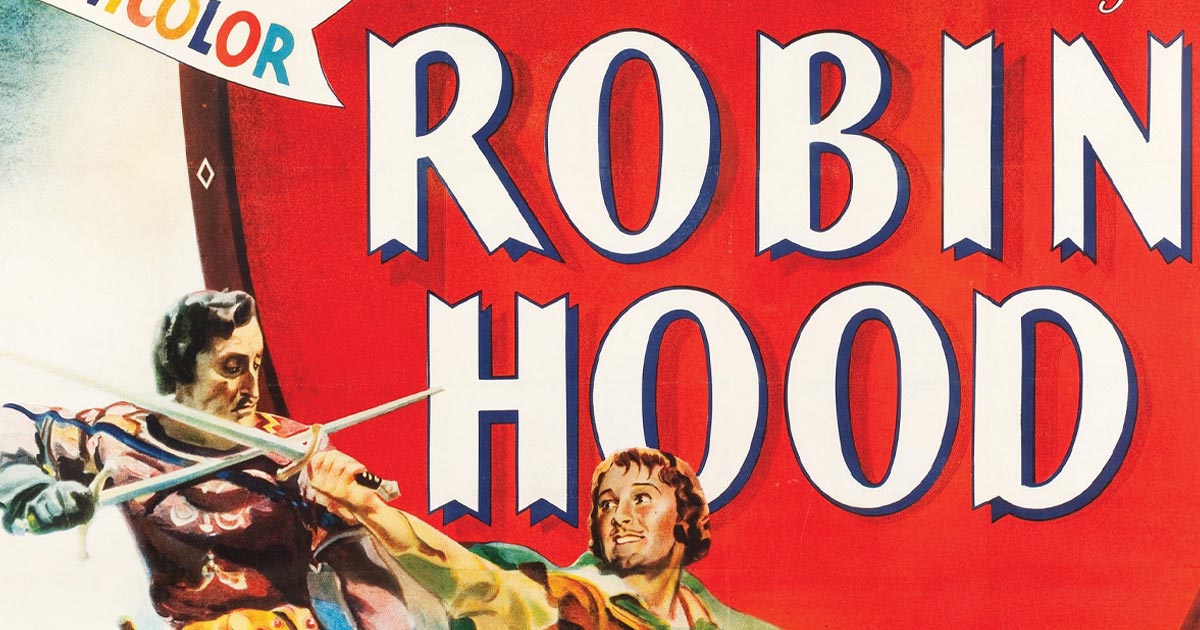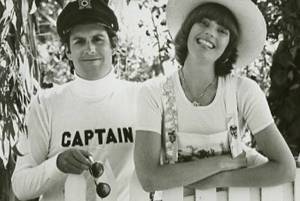Contains affiliate links
By JACQUELINE T. LYNCH
(50PLUSWIRE) “The Adventures of Robin Hood” (1938) looks as fun and lusty a good time as people could have overthrowing a corrupt monarch while wearing tights, swinging from trees, and eating chunks of meat with their hands.
The movie famously made Errol Flynn a star, a man who truly looked every bit the romantic hero. He was so natural in his 12th-century costume and pageboy haircut, he seems almost out of place in his other films set in more modern times.
Basil Rathbone is the brooding Sir Guy, who wants Flynn dead and who just plain wants the lovely Lady Marion, played by Olivia de Havilland. Claude Rains plays the devious and deliciously effete Prince John, who has usurped his brother’s throne.
The well-known legends of Robin Hood are given a light, yet jubilant, telling in this early Technicolor film, and what really makes it are the reliable character actors of the day: Alan Hale, Sr. as Little John, Eugene Pallette (who, like Flynn, also looks good with a sword) as Friar Tuck, Una O’Connor as the easily flattered, giddy servant to Lady Marion, and a collection of Warner Brothers standbys.
Most of the film is shot outdoors, which gives it an authenticity sometimes lacking in the usual studio sets when movies of the time attempted to take us back into history.
However, the castle set is particularly impressive, and the final great swordfight between Rathbone and Flynn all over the great hall, stairs, and pillars of this set is especially memorable. Their shadows as they slash at each other with their swords, thrown on the stone wall from the firelight, is iconic. We cannot imagine a swordfight without that backdrop. (It is sadly missing in Olympic fencing, unfortunately.)
Another scene of the duplicitous Abbot, Sir Guy, and Prince John plotting together is cleverly shot with the roaring fire between them and the camera.
Technicolor must have been invented just for fire. From the moment we see Flynn enter the castle with a killed stag across his shoulders, plunking it on the table in front of Claude Rains, we know this is going to be a hearty tale of knightly courtliness absent the table manners. Swordsmanship with dirty tricks. Honor with treachery. Stolen riches and stolen kisses. It is a 12-year-old boy’s best scenario: lots of fighting and not too much mushy stuff.
We are told in the prologue that King Richard is off in the Holy Land to drive off the infidels. Loaded words today, and the fight between the ruling Normans and suppressed Saxons is a very old story in the course of history. Only the names need be changed to see the same struggles happening over and over again, all over the world. Ethnic and tribal clashes, it seems, are difficult to escape, even in an escapist film.
Authors Christopher Finch and Linda Rosenkrantz tell us in their book, Gone Hollywood, that Howard Hill, who was the archery consultant on the film and taught the actors for the great archery contest, was actually the person who shot Robin’s arrows dead-center on the target. The arrows went “in like Flynn,” so to speak.
Though our hero Flynn did not shoot the arrows, we may still be impressed, however, by his sword fighting, as well as by his and Hale’s masterful fight with quarterstaffs.
It is difficult to watch this heroic battle without being reminded of Daffy Duck’s less heroic battle with his “buck and a quarter quarterstaff” with Porky Pig as the Friar in Robin Hood Daffy (1958), made, of course, by the same studio, Warner Brothers. Though Errol Flynn was never heard to have uttered, “Yoiks and away!” as Daffy does for his rallying cry, perhaps he should have. It is the only thing The Adventures of Robin Hood is missing.
Another cartoon tribute comes in Rabbit Hood (1949), when Bugs Bunny’s Sherwood Forest adventure is capped by a visit from the man himself, as a live-action film clip from Robin Hood is tacked onto the end of the cartoon with Errol Flynn welcoming Bugs to Sherwood.
Imitation, we know, is the sincerest form of flattery, so clearly, Flynn’s Robin Hood became a classic—we may even say a legend—in its own time. ISI
Jacqueline T. Lynch is the author of “Ann Blyth: Actress. Singer. Star.,” “Hollywood Fights Fascism,” and soon to be published “Christmas in Classic Films,” and several other non-fiction books on history and classic films, as well as novels. Website: www.JacquelineTLynch.com.










